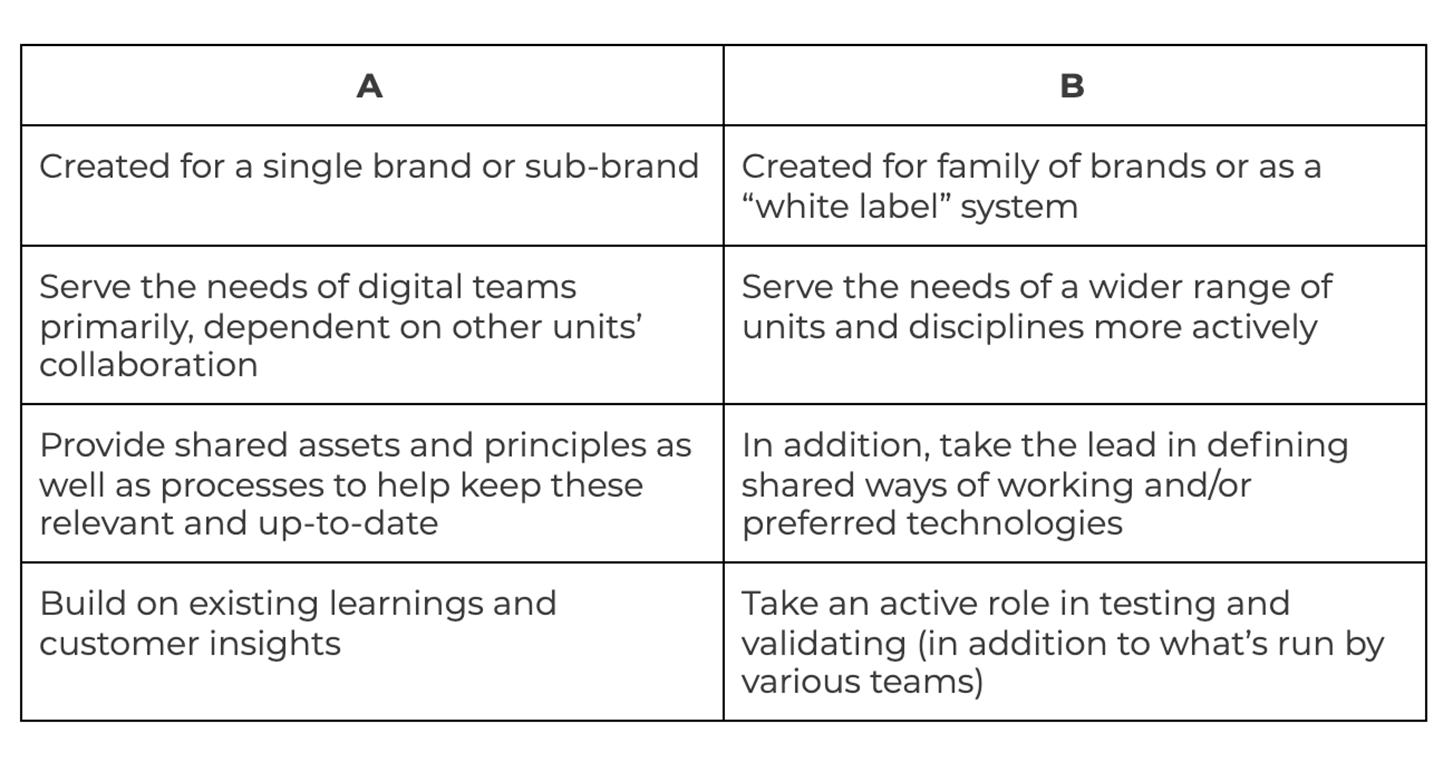
Design System – Finding the right definition, driver, and scope for you
What is a design system?
Design System is an umbrella term that’s established itself since digital became a mainstay of day-to-day operations. We’ve found it’s best to think of it as…
- A platform that aligns an organisation around creating superb experiences
- A service that supports a variety of teams in their everyday work
- A collection of processes and resources that ensure relevant knowledge is shared efficiently across teams
When are we likely to need a design system?
- Establishing a long-term vision for your products: Managing a design system requires taking a stance on what’s future-proof (brand, technology, design, business priorities). Compared to conceptual ‘vision’ presentations, a design system’s focus is on the most re-used assets that make up the majority of your services – and getting these into the hands of creators in the most convenient ways possible to start prototyping and learning.
- Scaling up digital capabilities: A few teams may stay connected relatively easily. With more members and teams joining in, pressure on onboarding and alignment increases and can no longer be organised in the same ways as before.
- Shifting from a product oriented to service led model: Whether you’re using digital tools for self-service or to power your client facing operations, these interfaces directly impact the quality you provide – and hence, the engagement you’re able to create in the long term.
- Looking to renew your brand: Your product is an integral part of facilitating your brand. Traditional brand guidelines haven’t met the needs of digital teams, resulting in a gap. As a result, each and every team may end up spending extra time interpreting how to best translate high level core identity style definitions into the myriad of components, interactions, and UX copy. Without shared criteria and feedback practices, it’s very hard to agree which of these would be the best fit – and provide a harmonious experience.
What’s the right scope for us?
There’s no off-the-shelf answer to this. A design system can be

We’ve found that companies new to design systems are by far more successful, if they start small, launch early, and work closely with pilot teams to ensure what’s delivered solves actual needs.
We’ve also found that companies with varied product portfolio management capabilities, limited alignment on future-proof technology choices, or simply too-low headcount to handle workloads tend struggle more when it comes to implementing a design system.
What’s next?
We were happy to see that the extensive work we’ve done in this area is being recognized. This February, Forrester stated Idean (part of Capgemini Invent) as one of recommended partners for Design System Initiatives.

Elisa Pyrhönen is a Lead Service Design at frog’s Helsinki studio. As a coach, she helps other frogs grow professionally. As a lead in client iniatives, she’s responsible for cultivating the conditions to succeed. Her analytical capabilities, creative execution, and positive approach facilitate actions. In addition to working closely with several clients on their design system journeys, Elisa has co-authored a book on the organizational impact of design systems. Her special skills also include doodling and knocking over water glasses.
We respect your privacy
We use Cookies to improve your experience on our website. They help us to improve site performance, present you relevant advertising and enable you to share content in social media. You may accept all Cookies, or choose to manage them individually. You can change your settings at any time by clicking Cookie Settings available in the footer of every page. For more information related to the Cookies, please visit our Cookie Policy.